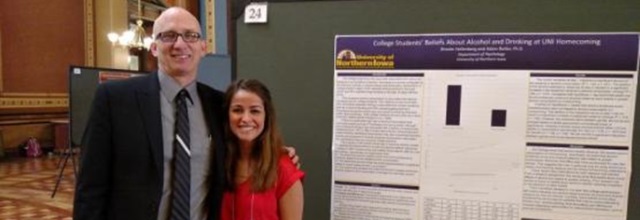Honors Program Theses
Award/Availability
Open Access Honors Program Thesis
First Advisor
Tilahun Abebe, Honors Thesis Advisor
Keywords
Fusarium--Genetic engineering; CRISPR-associated protein 9;
Abstract
Fusarium graminearum is a pathogenic fungus that causes scab or Fusarium head blight disease in barley and wheat. Alternative approaches to protect barley from this devastating disease are badly needed. In recent years, an RNA-guided genome-editing system known as clustered regularly interspaced short palindromic repeat and CRISPR-associated protein 9 (CRISPR/Cas9), has become a popular method for genome modification (Jinek et al., 2012). We applied CRISPR/Cas9 technology in an effort to make F. graminearum less infectious. We used CRISPR/Cas9 plasmids constructed by a former UNI student (Akers, 2019) to mutate three genes in F. graminearum. One of the genes (AUR1) is a visual marker and the other two genes (MGV1 and Tri5) are essential for infection. The CRISPR/Cas9 plasmids also contained a hygromycin B resistance gene for selection. We transformed F. graminearum protoplasts and selected colonies on media containing hygromycin B. We hypothesized that transforming F. graminearum protoplasts with CRISPR/Cas9 plasmids would edit the target genes. We recovered many colonies on selective media. This suggests that colonies carry the CRISPR/Cas9 plasmids. However, we were unable to produce data that shows mutation in the genome, partly because of the shutdown of campus due to the COVID-19 pandemic.
Year of Submission
5-2020
Department
Department of Biology
University Honors Designation
A thesis submitted in partial fulfillment of the requirements for the designation University Honors
Date Original
5-2020
Object Description
1 PDF file (14 pages)
Copyright
©2020 Grace Marie Sack
Language
en
File Format
application/pdf
Recommended Citation
Sack, Grace Marie, "Editing Fusarium graminearum using CRISPR/Cas9" (2020). Honors Program Theses. 431.
https://scholarworks.uni.edu/hpt/431



